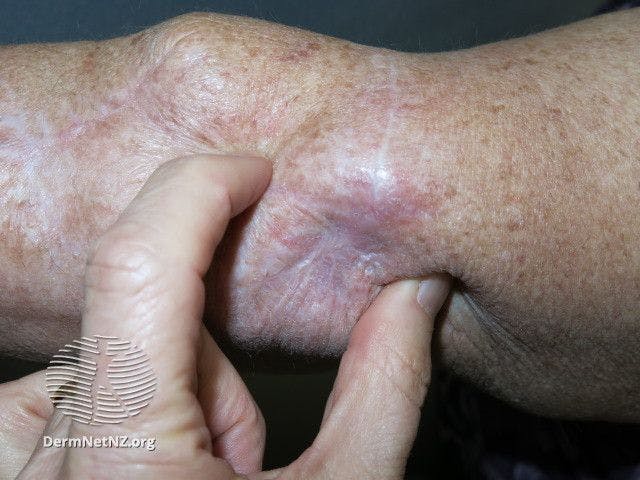- Acne
- Actinic Keratosis
- Aesthetics
- Alopecia
- Atopic Dermatitis
- Buy-and-Bill
- COVID-19
- Case-Based Roundtable
- Chronic Hand Eczema
- Chronic Spontaneous Urticaria
- Drug Watch
- Eczema
- General Dermatology
- Hidradenitis Suppurativa
- Melasma
- NP and PA
- Pediatric Dermatology
- Pigmentary Disorders
- Practice Management
- Precision Medicine and Biologics
- Prurigo Nodularis
- Psoriasis
- Psoriatic Arthritis
- Rare Disease
- Rosacea
- Skin Cancer
- Vitiligo
- Wound Care
News
Article
Dermatology Times
Why Dermatologists Are Not Average Investors
Author(s):
This article compares physicians in general to average US investors in several key areas and examines how these factors affect a dermatologist’s approach to investing and wealth management.
Investing successfully is challenging for many physicians, including dermatologists. To do so, dermatologists should first apply the adage “know thyself.” When it comes to investing and wealth management, dermatologists are not like most investors in the US—and that matters in several important ways. This article compares physicians in general to average US investors in several key areas and examines how these factors affect a dermatologist’s approach to investing and wealth management.
Income Level and Tax Liability
Doctors, in general, and dermatologists, in particular, typically have an income level that far exceeds that of most investors. The median household income in the US in 2021 was approximately $70,784.1 Slightly more than 10% of the population had a household income exceeding $200,000,2 which means nearly 90% were under that threshold. In a 2022 report on physician compensation, dermatologists had an average compensation above $435,000.3
This enormous income difference has implications in all disciplines of wealth management but is especially relevant in tax planning. The average retail investor cares little about tax planning because they do not have a significant tax problem. Compare the average US taxpayer’s effective federal income tax rate of 12.1%4 with the top marginal income tax rate of a dermatologist. Many find themselves in the top federal tax rate bracket (currently 37%). Add the net investment income tax of 3.8% and potentially state and local taxes, and one can easily recognize the importance of tax-efficient investment strategies for doctors.
Almost all performance data for an investment fund show pretax returns, when posttax returns are all that really matters to heavily taxed investors such as dermatologists.
Amount of Free Time
Ask almost any physician to identify their scarcest resource and the answer is likely to be “time.” The data back this up: A Bureau of Labor Statistics report published in October 2019 reveals that the average nonfarm work week in the United States was 34.4 hours. For “private-sector production and nonsupervisory employees,” it was 33.6 hours.5 Conversely, within the past decade, the AMA reported that fewer than 15% of physicians worked less than 40 hours per week.6
Because of this lack of time, focusing on the financial, tax, legal, risk, and insurance issues that must be understood to adequately manage an individual’s finances in general, and investments in particular, is a significant challenge. Add to this the consequences of managing a physician’s higher-than-average income and net worth in less-than-ideal circumstances and the issue becomes even more important.
We are not saying that physicians cannot or should not take an active role in their wealth planning and investing. However, compared with the average investor, physicians have much less time to do so and there is more at stake.
Highest and Best Use of Time
For the relatively few dermatologists who have the spare time to actively invest on a continuing basis, the question becomes, does it make economic sense to do so?
Certainly, most physicians are able to research investments if they have the time. Thus, the most important question is not whether a physician can do-it-yourself (DIY) invest, but whether they should. In other words, would a dermatologist be better off putting their time to its highest and best use—treating patients and being paid well to do so—and then spending a portion of that income to hire investment and wealth management expertise?
The highest and best-use analysis could be applied to other services such as preparing tax returns or mowing the lawn. Some physicians are natural DIYers and will gravitate to performing such tasks themselves rather than delegating, especially when the tasks are low risk and suboptimal outcomes can easily be remedied.
Consider tasks where it is more difficult to determine if the job was done well, such as designing an investment portfolio. Basic economics may dictate that, for these types of tasks, delegation makes financial sense.
At a high level, let’s examine a few numbers. Most (though not all) dermatologists work approximately 200 to 250 days a year and their income ranges from $250,000 to $1 million or more annually, so they earn between $1000 to $5000+ per day.
If we estimate that the work involved in actively managing a portfolio, including researching public and private investments, assessing portfolio risk, trading and rebalancing, harvesting tax losses, and locating tax-efficient assets, would take 1 to 3 days per month, this equates to a time cost of between $12,000 and $180,000 annually.
Obviously, this range is extremely large, with the highest-income physicians incurring the greatest opportunity cost because they are paid so well for the highest and best use of their time.
This “highest and best use” concept is also the one that dictates why physicians should not answer their own phones, book patient appointments, do the coding and billing, or perform medical tasks that a nurse or physician’s assistant can competently handle.
To avoid the time cost of doing their own financial planning and investment management, most physicians elect to outsource these services. However, if you make the decision to hire an adviser, that does not mean you can completely ignore your finances and become disengaged. Ask difficult questions, check for conflicts of interest, demand transparency, and expect regular communication.
Net Worth
Net worth is another financial differentiator. Unfortunately, many financial products or services are not designed to handle the increasingly complex circumstances of physicians with a high net worth. A dermatologist may own their practice, an interest in a surgery center, office building, or other piece of real estate, and they may have a secondary income from speaking engagements or consulting. Common financial tools and products often lack the sophistication to integrate the physician’s nontraditional situation into an appropriate risk-managed investment strategy or comprehensive financial plan.
David Mandell, JD, MBA, is an attorney and author of more than a dozen books for doctors, including Wealth Planning for the Modern Physician. He is a partner in the wealth management firm OJM Group (www.ojmgroup.com).
Andrew Taylor, CFP, is a partner and Wealth Advisor. They can be reached at 877-656-4362 or mandell@ojmgroup.com.
Disclosure
OJM Group, LLC (“OJM”) is a US Securities and Exchange Commission (SEC)–registered investment adviser with its principal place of practice in the state of Ohio. SEC registration does not constitute an endorsement of OJM by the SEC nor does it indicate that OJM has attained a particular level of skill or ability. OJM and its representatives are in compliance with the current notice filing and registration requirements imposed upon registered investment advisers by those states in which OJM maintains clients. OJM may only transact practice in those states in which it is registered or qualifies for an exemption or exclusion from registration requirements. For information pertaining to the registration status of OJM, please contact OJM or refer to the Investment Adviser Public Disclosure website www.adviserinfo.sec.gov.
For additional information about OJM, including fees and services, send for our disclosure brochure as set forth on Form ADV using the contact information herein. Please read the disclosure statement carefully before you invest or send money.
This article contains general information that is not suitable for everyone. The information containedherein should not be construed as personalized legal or tax advice or as a recommendation of any particular security or strategy. There is no guarantee that the views and opinions expressed in this article will be appropriate for your particular circumstances. Tax law changes frequently; accordingly, information presented herein is subject to change without notice. You should seek professional tax and legal advice before implementing any strategy discussed herein.
References
1. Release tables: real median household income by state, annual. Fred Economic Data. Accessed September 21, 2023. https://fred.stlouisfed.org/release/tables?eid=259515&rid=249
2. Percentage distribution of household income in the United States in 2022. Statista. September 18, 2023. Accessed September 21, 2023. https://www.statista.com/statistics/203183/percentage-distribution-of-household-income-in-the-us/
3. McKenna J. Medscape dermatologist compensation report 2022: incomes gain, pay gaps remain. Medscape. May 13, 2022. Accessed September 21, 2023. https://www.medscape.com/slideshow/2022-compensation-dermatologist-6015136#2
4. Parys S, Orem T. 2022-2023 tax brackets and federal income tax rates. NerdWallet. Updated August 2, 2023. Accessed September 21, 2023. https://www.nerdwallet.com/article/taxes/federal-income-tax-brackets
5. Economic news release: employment situation summary. US Bureau of Labor Statistics. September 1, 2023. Accessed September 21, 2023. https://www.bls.gov/news.release/empsit.nr0.htm
6. How many hours are in the average physician workweek? American Medical Association. January 6, 2015. Accessed September 21, 2023. https://www.ama-assn.org/practice-management/physician-health/how-many-hours-are-average-physician-workweek

Newsletter
Like what you’re reading? Subscribe to Dermatology Times for weekly updates on therapies, innovations, and real-world practice tips.
































